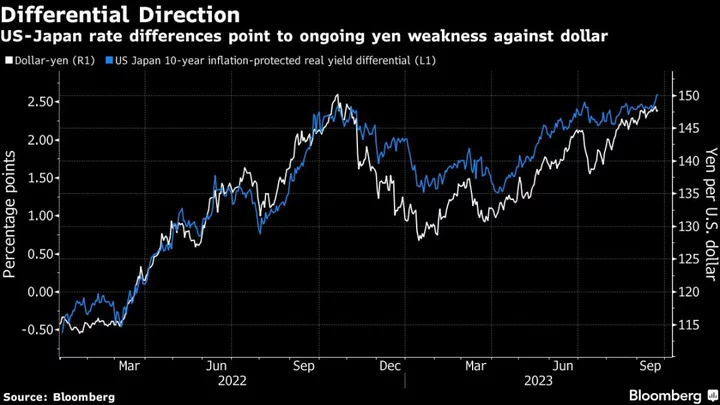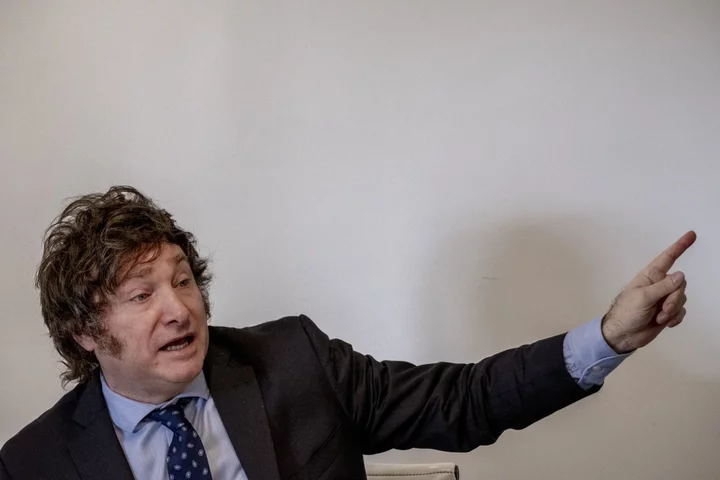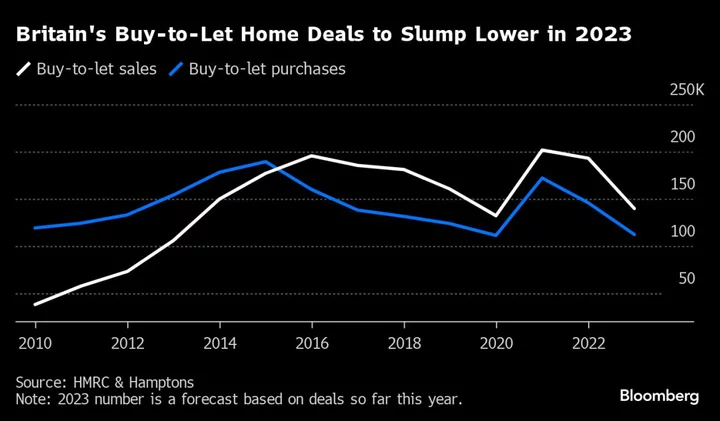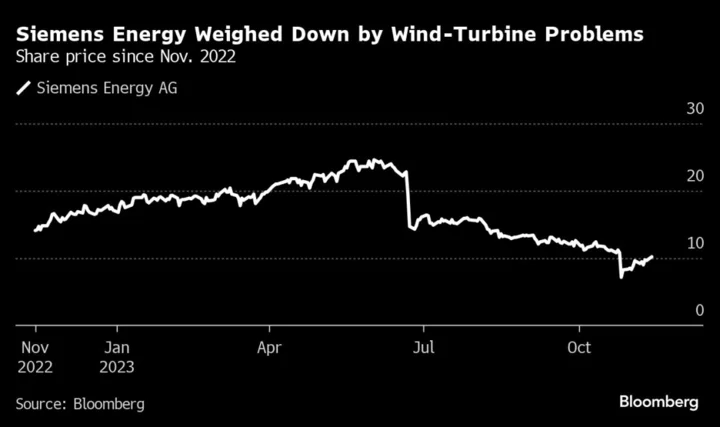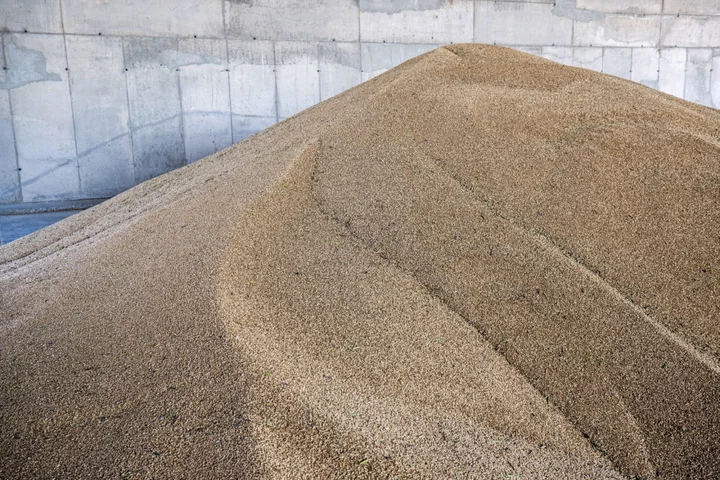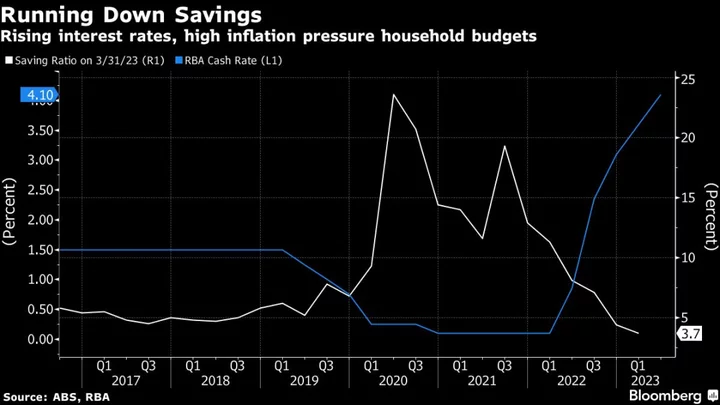The Bank of Japan left its monetary settings unchanged and offered no clear sign of a shift in its policy stance, putting a damper on market speculation over the prospects for a near-term interest rate hike and adding pressure on the yen.
The BOJ kept its negative interest rate and the parameters of its yield curve control program intact on Friday in an outcome predicted by all 46 economists surveyed by Bloomberg. It also maintained a pledge to add to its stimulus without hesitation if needed, a vow that offers yen bears a reason to keep betting against it.
Japan’s currency weakened as much as 0.4% after the decision to around the 148.20 mark against the dollar. This helped stocks, which trimmed about half of their losses for the day. The benchmark 10-year bond yield was down half a basis point from Thursday’s closing level at 0.74%.
The lack of major changes to the central bank’s policy statement suggests Governor Kazuo Ueda is likely to strike a neutral tone to keep his options open while trying to avoid any further downward pressure on the currency when he holds a press briefing later in the day.
“If there is no follow-up on Ueda’s comments about negative interest rates or having wage information by the end of the year, yen bears could be back with a vengeance,” said Charu Chanana, a market strategist at Saxo Markets in Singapore. In such a situation, the yen could test 150 per dollar, she added.
Economic data earlier in the day showed inflation was slightly faster than consensus in August as it hovered above the BOJ’s target for a 17th month, an outcome that casts further doubt on the central bank’s assertion that price growth will slow and that stimulus needs to continue for now. The BOJ’s insistence on sticking with its ultra-easy policy is a factor keeping pressure on the yen.
The Federal Reserve’s decision this week to hold rates and telegraph the likelihood of one more rate hike pushed the Japanese currency to a fresh 10-month low of 148.46 against the dollar. The large gap between rates in Japan and the US is one of the main factors driving the yen down against the dollar.
The currency is now beyond the levels that prompted Japan to intervene in foreign-exchange markets a year ago to the day. Measured against a broad basket of currencies and adjusted for inflation, it was at its weakest on record in August using data back to 1970.
While financial authorities have warned that they are prepared to step into markets again, a message reiterated by both Prime Minister Fumio Kishida and Finance Minister Shunichi Suzuki ahead of the decision, a policy move by the BOJ would likely have more effect at stemming the tide.
Ueda kindled expectations earlier this month about an end to the world’s last negative policy rate when he told local media the chances “aren’t zero” that the BOJ might be able to confirm a virtuous wage-inflation cycle by year-end, a prerequisite for a rate hike.
Given those comments and the continued weakness in the yen, some BOJ watchers saw a risk of the bank tweaking its forward guidance at the latest meeting. But the central bank repeated in its statement a long-held pledge to add easing without hesitation if needed, signaling it’s still concerned about downside risks.
Ditching the pledge might have offered the yen some support, but the central bank is also likely wanting to avoid giving any impression it is now simply responding to market moves.
“The key catalyst for BOJ policy change is whether social behavior changes and people start believing that their wages will continue to rise along with prices,” said Masamichi Adachi, economist at UBS Securities. “I don’t see that kind of change firmly taking place in the next six months or so. That means the BOJ will change policy gradually, too.”
Still, Ueda’s recent comments over the possible end of negative rates in Japan have left a wake of confusion among analysts and investors.
Shinichiro Kobayashi, chief economist at Mitsubishi UFJ Research and Consulting, said the question everyone wants to ask is: “Did he mean to imply that the timing of the interest rate hike would be earlier than previously thought, or did he simply want to say that it would depend on conditions?”
Currency traders are also watching to see if Friday’s meeting and press briefing set into play the same sort of drama that occurred a year ago, when then-Governor Haruhiko Kuroda pledged to continue monetary easing after the Fed met and the BOJ stood pat. That helped accelerate the yen’s drop, prompting the government to buy the currency for the first time in 24 years.
What Bloomberg Economics Says...
“The economy isn’t ready for any rate hikes aimed at supporting the yen. Domestic demand is faltering. Wage growth has made some progress but is shaky due to a looser job market.”
—Taro Kimura, economist
To read the full report, click here.
At the press conference, starting at 3:30 p.m., Ueda will have to strike a delicate balance to avoid sounding either too dovish or hawkish.
If he sends strong signals on normalizing policy, the comments could support the yen but push yields on 10-year government bonds closer to the bank’s de-facto ceiling at 1%. A move in that direction could prompt the BOJ to buy more bonds, exacerbating the side effects of the yield control program.
The 10-year yield touched 0.745% on Thursday, the highest since 2013.
Until Ueda speaks, analysts will have to assume that the BOJ will continue to remain the world’s outlier on stimulus even if it hurts the yen.
“The BOJ is the decent looking wallflower at the school dance — everyone’s waiting for them to bust a move but the reality is they’re waiting for everyone to come to them,” said Calvin Yeoh, money manager at hedge fund Blue Edge Advisors in Singapore.
--With assistance from Sumio Ito, Yoshiaki Nohara, Yuko Takeo, Erica Yokoyama, Masaki Kondo, Aya Wagatsuma and Ruth Carson.
(Adds market reaction, more details from statement)

